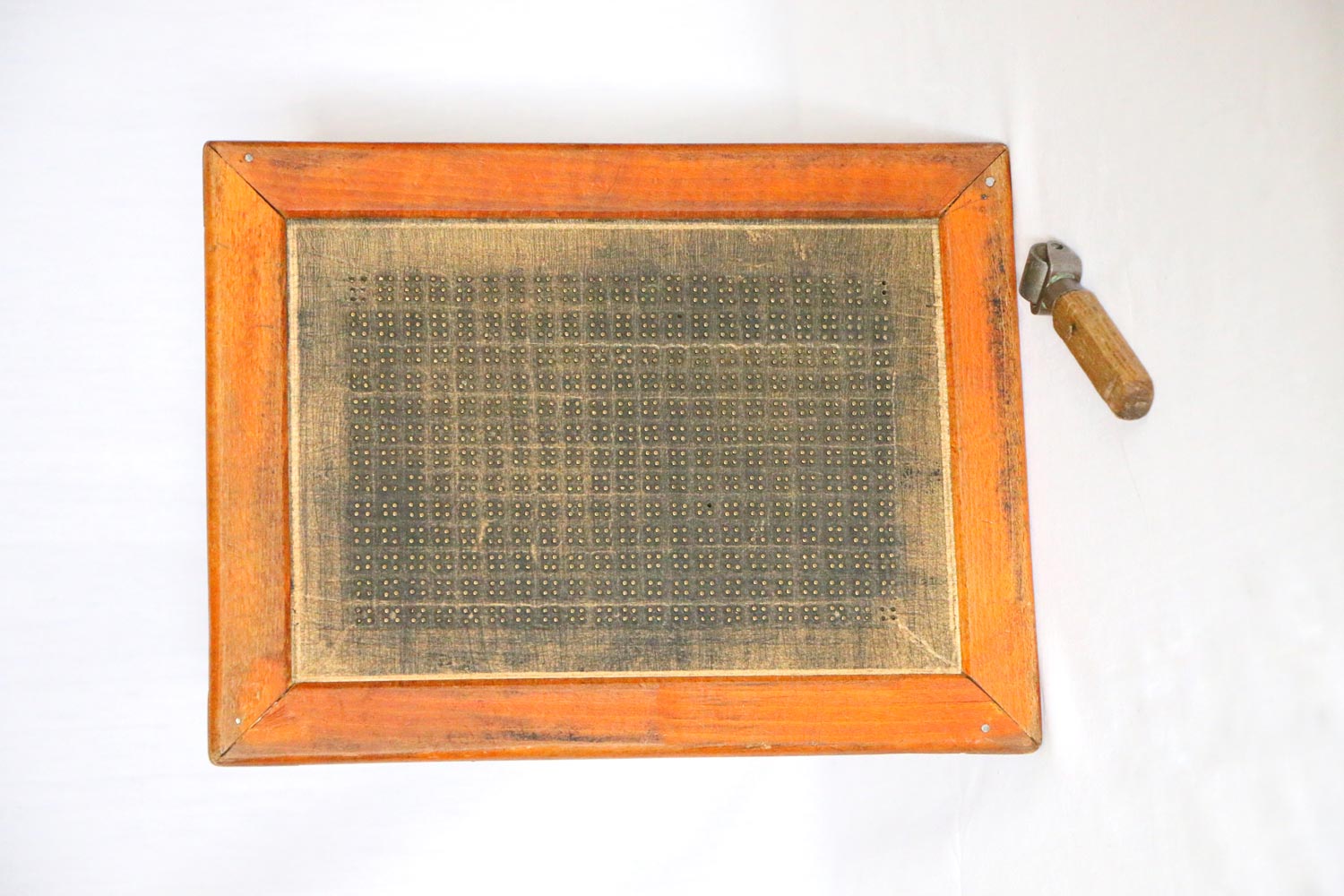Schleussner’s 6-dot slate
Author: Karl Schleussner, German typhlopedagogue
The year of production of the first slate: 1906
Dimensions: 32 x 24,5 cm
Donor: Elementary Boarding School for the Blind in Levoča and Technical Museum in Brno, department of the blind history documentation
An author of the 6-dot Schleussner‘s slate was Karl Schleussner, German typhlopedagogue and a manager of an educational institute for the blind in Nuremberg. The slate made even more difficult mathematical notation possible.
Karl Schleussner was born on 24 January 1858 as a son of a merchant. He attended elementary school in Munich where he studied at Latin secondary school. In 1872 he lost an eye when bow shooting. Later on he got totally blind due to so called sympathetic disorder. In 1880-1882 he studied philology and theology at university in Erlangen. After graduation he came back to Nuremberg, where he taught philology. Since 1884 he signed up with Federal Institute for the Blind as a teacher and soon after he became its headteacher. Production of special wooden slates with little metal pins for mathematical notation (Schleussner’s slate) and also building block sets and other toys was done on his impulse. His slate has been used in Slovak and Czech schools for the blind till the 50s of the 20th century, because it made orientation in the notation easier and allowed their corrections, too. The slate was produced in the two sizes – as 4-dots for mathematical notation and as 6-dot for any notation. A stylus with flat apex for pressing in the dots that did not suit to different letters and a little roller used for pressing the dots on the reverse side so the dots came back to the front side were parts of the slate.
He died on 9 December 1918.
Source:



